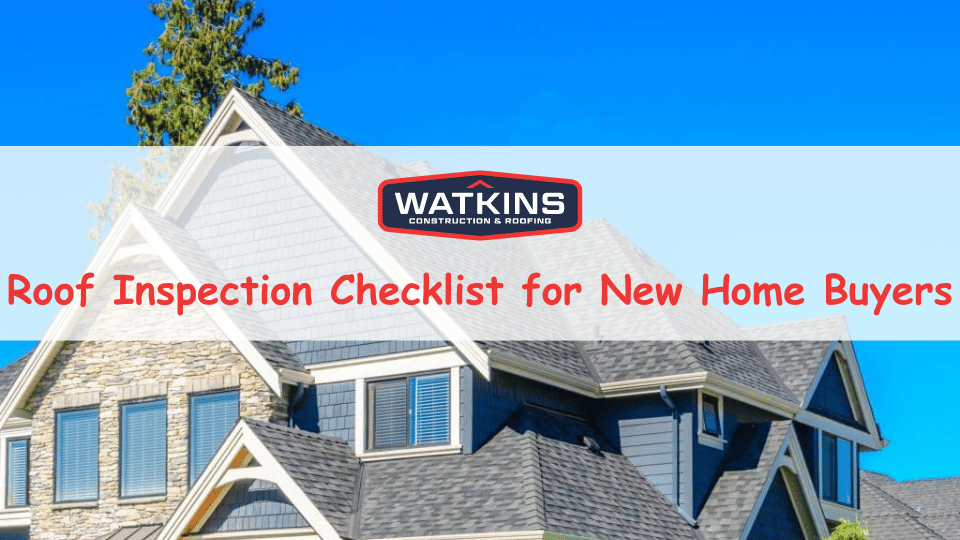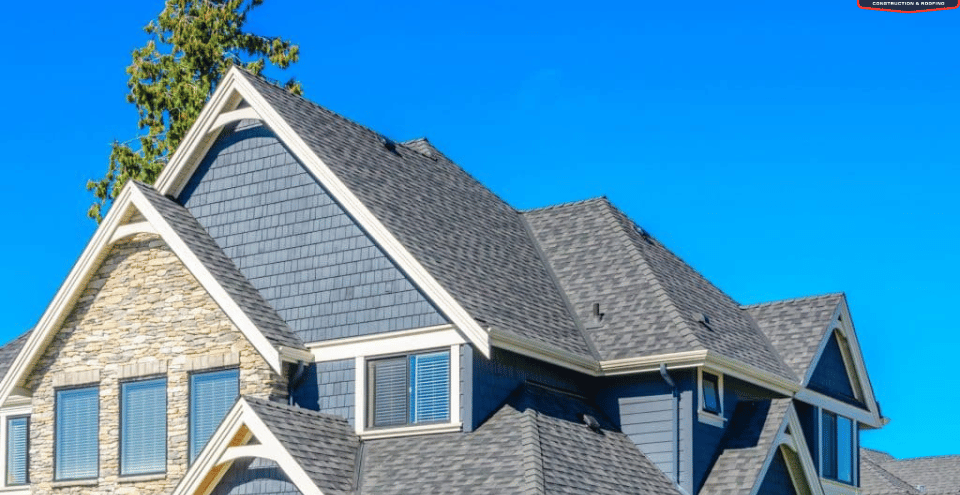Roof Inspection Checklist for New Home Buyers with Watkins Construction & Roofing. Buying a new home is an exciting milestone, but it also comes with its fair share of responsibilities and considerations. One of the most crucial aspects of a new home purchase is ensuring that the roof is in good condition. A well-maintained roof is essential for protecting your investment and ensuring the safety and comfort of your family. To help new home buyers navigate the roof inspection process, we’ve created a comprehensive checklist to ensure you cover all the essential elements.

1. Exterior Inspection:
Overall Condition: Begin by evaluating the overall condition of the roof. Look for signs of wear and tear, such as cracked, curling, or missing shingles, as well as any visible damage or debris.
Age: Determine the age of the roof. A typical asphalt shingle roof has a lifespan of 20-25 years, while other materials like metal or tile can last much longer. Knowing the age of the roof can give you an idea of when you might need to consider a replacement.
Flashing: Check the flashing around roof penetrations such as chimneys, vents, and skylights. Ensure that it’s secure and in good condition. Damaged or improperly installed flashing can lead to leaks.
Gutters and Downspouts: Inspect the gutters and downspouts for any signs of damage, blockages, or sagging. Proper drainage is essential to prevent water from pooling on the roof.
2. Interior Inspection:
Attic: If accessible, inspect the attic for any signs of water damage, leaks, or structural issues. Look for water stains, mold, or wet insulation. Adequate insulation and ventilation in the attic are also crucial for preventing moisture-related problems.
Ventilation: Check for proper attic ventilation, which helps regulate temperature and moisture levels. Inadequate ventilation can lead to mold growth and reduced roof lifespan.
Trusses and Rafters: Examine the condition of the roof’s support structure. Look for signs of sagging, bowing, or damage to the trusses or rafters.
3. Roof Material Inspection:
Shingles: Inspect the roofing material (shingles, tiles, metal panels, etc.) for any signs of damage, such as cracks, buckling, or granule loss in the case of asphalt shingles. Ensure that the shingles lie flat and are not lifting at the edges.
Moss or Algae: Check for the presence of moss, algae, or lichen on the roof surface. While these growths may not immediately compromise the roof’s integrity, they can lead to long-term damage if not addressed.
4. Roof Penetrations and Features:
Chimneys: Inspect the chimney and its flashing for signs of damage or deterioration. Pay attention to the mortar between bricks or stones, which should be intact.
Skylights: Examine the seals around skylights for any signs of leaks or damage. Ensure that they open and close correctly.
Vents and Ventilation: Check roof vents for proper function and look for any signs of damage or obstruction. Adequate ventilation is essential to prevent moisture buildup in the attic.
5. Check the Roof’s History:
Roof Repairs or Replacements: Ask the seller or the real estate agent about any recent roof repairs or replacements. Obtain documentation, if available, to confirm the work was done correctly.
Warranty: Determine if there’s an existing roofing warranty. Roof warranties can be valuable, as they may cover repair or replacement costs in the event of certain issues.
6. Roofing Inspection by Professionals:
While a visual inspection is essential, it’s highly recommended to have a professional roofing contractor conduct a thorough inspection. They can provide a more detailed assessment, identify hidden issues, and offer recommendations for any necessary repairs or replacements.
7. Cost Estimates:
If the roof inspection reveals any problems or areas that require attention, obtain cost estimates for repairs or replacements. This information can be used during negotiations or for budget planning.
8. Roof Maintenance and Care:
Once you’ve purchased the home, prioritize regular roof maintenance. Cleaning gutters, removing debris, and addressing minor issues promptly can extend the life of your roof.
9. Insurance Considerations:
Contact your homeowner’s insurance provider to discuss your findings and understand your coverage. Some insurance policies may require certain roof conditions for coverage.
10. Future Planning:
Based on the inspection results and the age of the roof, start planning for future roof maintenance or replacement. Setting aside funds for these future expenses can help you avoid financial surprises down the road.
In summary, a thorough roof inspection is a crucial step in the home-buying process. It can help you identify any existing issues, plan for maintenance or repairs, and ensure that your new home’s roof provides the protection and security you need. Consider involving roofing professionals in the inspection process to gain a more comprehensive understanding of the roof’s condition.
For more information, you can reach Watkins Construction & Roofing at 601-488-3179. We service areas in Jackson, Flowood, Clinton, and Ridgeland, MS.
